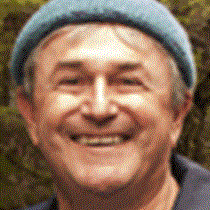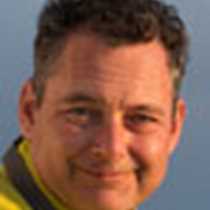Morning of our second day in Haida Gwaii, and we are walking in SGang Gwaay Linagaay, a First Nations village site. This has been declared a UNESCO World Heritage site, a place of importance to humankind on a global scale. Giant cedar beams, fallen and moss-covered, mark the remains of longhouses. Memorial and mortuary poles, still standing as they have for 150 years, are slowly returning to the rain forest that birthed them. It is a place where people lived continuously for thousands of years, one culture, passing their knowledge of this place from generation to generation. To be traditionally Haida is to create art and use technology that is itself intimately connected to the land, derived from it, reflecting it. This is how humankind began: our ancestors lived on the land where their ancestors were born; they knew it intimately, they were of the land and given physical and spiritual sustenance from its abundance. Today, few of us know what it would be like to live in a place where your family has lived for scores of generations. Fortunately for us, we have Haida guides who can tell us about that, and more.
This is a place of wild nature too. We are in the southwest corner of an immense and isolated island archipelago, in the Gwaii Haanas National Park Reserve. We explore on foot and in expedition landing craft. Sea lions, seals, and seabirds are taking advantage of productive seas at the edge of open ocean. The water is clear beneath our small boats, cool and full of life: barnacles, mussels, sea stars, kelp, urchins and anemones, crabs and small fishes. There’s one California sea lion amongst many Stellers, like a Haida person who has made a journey to Tlingit country.
Evening now, and we’ve settled in to Recap. Photo tips, a vicarious trip underwater with undersea specialist Paul, and Bristol’s just started in on something that is bound to be interesting when a discreet radio call from Captain Cook on the bridge alerts expedition leader Cindy: “There’s some whales out there that look different.” Flip goes to take a look. Fin whales! The second largest animal on the planet! We hustle outside, where the setting sun is splashing the lightly cloud-swirled sky with sundogs. The whales look long and sleek. We see tall blows, then whale whale whale—long dark backs—before a pointy dorsal fin. We didn’t expect them here; they are rare in “inside” waters, and that makes the moment that much more poignant. They surface nearby, far away, near again. Behind them, Haida Gwaii.
Finally we tear ourselves away to go in to our own dinner. But the cetacean celebration isn’t over yet. We are just sitting down when suddenly the calm sea outside the dining room windows explodes with dolphins. Pacific white-sided dolphins, steaming our way. Leaping. Bow riding. We make quick trips to the bow, heads hung over the rail, dolphins speeding through the water underneath. One swims on its side, looking up at us as we are looking down. What are we, in a dolphin’s mind? Clearly, it’s people-watching.
If this day were a sentence, it would begin like this: “long ago, in the time when the Earth was young, when retreating ice began again to expand the habitable world of our ancestors…” And the end of the sentence, these lively intelligent creatures cavorting around us, would be an exclamation point, without a doubt.










